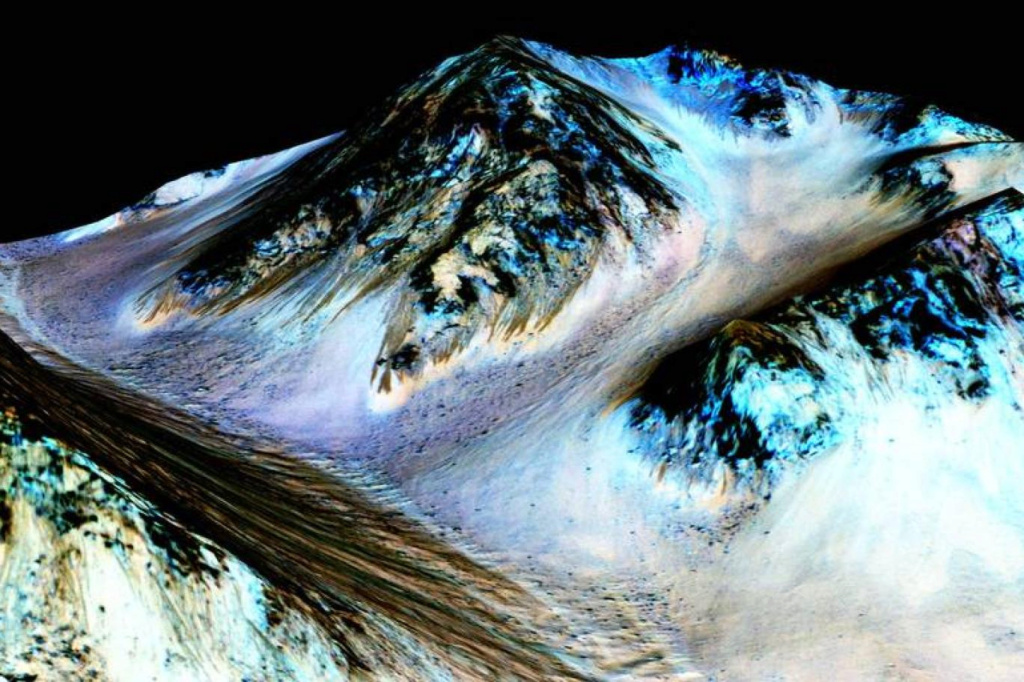Evidence for liquid water in the interior of Mars
Scientists warn that the latest conclusions do not necessarily mean that the Red Planet hosts life forms, but rather that it may be more habitable than we thought.

Is the water discovered in the interior of Mars evidence of life? (NASA.gov)
New evidence concluded by a number of scientists indicates the presence of liquid water under the surface of the planet Mars.
This discovery is a major breakthrough in the search for evidence that Mars is wetter than it appears, as well as in the search for alien life forms that the planet hosts.
Scientists say the new findings include, for the first time, evidence of water beneath the surface of Mars using data not derived from radar. Thus, it provides the additional view that the "red planet" may be habitable.
The scientists cautioned that the result of the research "does not necessarily mean the presence of life on Mars," but it does indicate that perhaps at a period of time the planet was more habitable, according to the researchers.
In the study, the researchers used a laser system on a spacecraft to determine small changes in the heights of ice caps on Mars. At a later stage, they compared those patterns to a hypothetical computer model that made predictions about changes at the surface that the presence of water mass under the ice caps might present - and found that they were identical.
Scientists have previously used radar scans to search for information indicating the possible presence of water under the ice, but some researchers have indicated that the data from the radar is subject to other interpretations, criticizing those results.
Now, the new findings are further evidence that Mars does in fact have liquid water under its south pole.
The University of Cambridge, England, supervised the work, which included scholars from the University of Sheffield and the Open University in Britain. As for the details of their work, a new paper titled "Surface Topographic Effect of Lower Waters Under the Antarctic Ice Sheet on Mars" was presented in the journal Nature Astronomy today.
Like Earth, Mars has thick water ice caps at each of its poles, roughly equal in volume to the Greenland ice sheet. Underneath Earth's ice sheets lie water-filled channels and even large subglacial lakes, but until recently, its Martian counterpart was thought to be frozen solid to its bottom due to the cold Martian climate.
“The study provides the best indication yet that there is liquid water on Mars, today, because we have now found on the surface of the planet two of the main clues that we will look for when looking for subglacial lakes on Earth,” said Dr. Francis Butcher, the second researcher on the study from Sheffield University.
It is known that "liquid water is an essential element for life, although it does not necessarily mean the presence of life on Mars," added Dr. Butcher.
"For it to be in liquid form at these low temperatures, the water below Antarctica may be so salty that it would be difficult for any microbial life to survive," Dr. Butcher said.
“However, [this observation] gives hope that in the past the planet had livable environments when the climate was less extreme [more temperate],” says Dr. Boucher.
In 2018, scientists used the European Space Agency's Mars Express radar to examine the Martian ice cap. The device found that the area under the ice strongly reflected radar signals - the scientists suggested it was evidence of liquid water, but a group of subsequent studies suggested that other materials might be just as reflective as water, and that the likelihood that the reflections were attributable to water was lower. Most likely given that it would need another [additional] heat source to remain liquid. As such, many scientists believed that the suggestion that water actually existed on Mars called for more evidence.
Turning to the findings, Professor Neil Arnold, of the Scott Polar Institute for Research at the University of Cambridge, who led the research, said: “The combination of the new topographic evidence, the results of our computer models and radar data increases the likelihood that there is at least one area of liquid water below the surface. The ice sheet on Mars today, and that Mars must still be active in terms of geothermal energy in order to keep the water under the ice sheet as a liquid.”
(The Press Association contributed to the report.)
Source: websites

